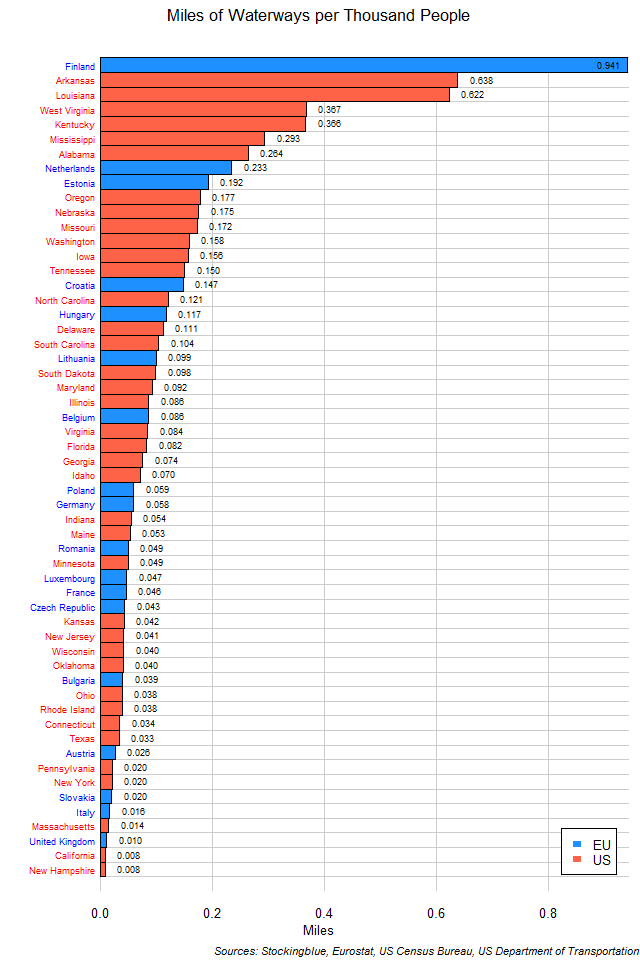
The chart above shows the miles of waterways per thousand people in EU and US states. Finland is in a class all its own, but Arkansas and Louisiana also outperform other states in this metric.
Findings
- The difference between the state with the most waterways per capita, Finland, and the state with the least, New Hampshire, is 0.93 miles.
- Finland has 123.81 times the waterways per capita that New Hampshire does.
- Only Finland, Arkansas, and Louisiana have more than half-a-mile of waterways for every thousand people.
Caveats
- EU waterway data is from 2016 except for Belgium (2008), Germany (2013), Luxembourg (2009), and Romania (2015). US waterway data is from 2013.
- EU population data is from 2011. US population data is from 2010.
- Waterway and population data come from different sources.
- EU and US data come from different sources.
- All figures are rounded to the nearest thousandth.
- Cyprus, Denmark, Greece, Ireland, Latvia, Malta, Portugal, Slovenia, Spain, and Sweden from the EU and Alaska, Arizona, Colorado, Hawaii, Michigan, Montana, Nevada, New Mexico, North Dakota, Utah, Vermont, and Wyoming from the US did not have any waterway data.
Details
Even though the EU has the state with the most waterways per capita and the US has the state with the least waterways per capita, the US as a whole has more waterways per capita than the EU as a whole does. Finland not only ranks first in this metric but is first in total waterways and ranks in the top eight in waterway coverage.
The European Union as a whole has 0.063 miles of waterways for every thousand people ranking it under Idaho and above Poland. The United States as a whole has 0.088 miles of waterways for every thousand people ranking it under Maryland and above Illinois.
Sources
Eurostat. 2017. "Data Explorer." Accessed December 11, 2017. http://appsso.eurostat.ec.europa.eu/nui/show.do?dataset=urb_lpop1&lang=en.
United States Census Bureau. "Annual Estimates of the Resident Population: April 1, 2010 to July 1, 2016." Accessed December 12, 2017. http://factfinder2.census.gov.
United States Department of Transportation. 2015. "State Transportation by the Numbers." Accessed March 21, 2018. https://www.bts.gov/sites/bts.dot.gov/files/legacy/_entire.pdf.